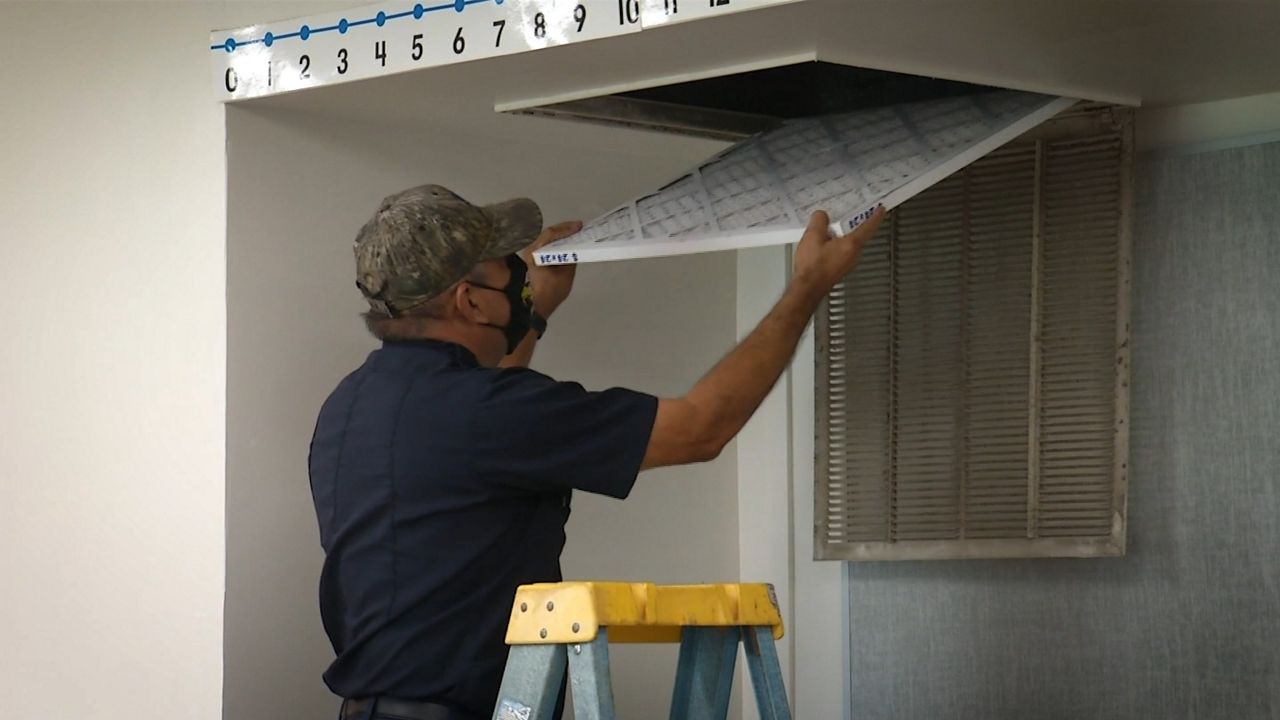The Centers for Disease Control Monday, updated its list of recognized COVID-19 symptoms to include issues many were reporting anecdotally, like loss of taste and smell, headaches, chills, repeated shakes along with chills, sore throat, and muscle aches. Fever, shortness of breath and cough still remain telltale signs of COVID-19 illness, but the additional symptoms offer more nuance and potential clarity as people seek diagnosis and testing remains elusive in many parts of the country.
University of Alabama at Birmingham Hospital Infectious Disease Physician Dr. Ellen Eaton says the expanded list is helpful. “Potentially more people are going to want to be tested and know how that affects their care going forward. The vast majority of folks are going to do OK. They're going to be ill, perhaps like a flu, they're going to need to stay home and hydrate.”
Eaton says, people who experience these symptoms should reach out to a primary care provider, “[They] may decide to test you depending on your other medical conditions and the availability of coronavirus testing in your area. But really, treat yourself as if you have a coronavirus until you can prove otherwise. And that is essential to reduce the spread in our communities.”
There are though, other symptoms that providers are seeing and patients are reporting, that are not yet recognized by the CDC. A significant number of COVID-19 patients are complaining of gastrointestinal issues like diarrhea, nausea, vomiting, and loss of appetite. A study of 59 COVID 19 patients in a Hong Kong hospital found 25 percent presented with GI issues.
There are also a growing number of reports pointing to potential skin manifestations of COVID-19. One account out of Italy found these symptoms in a fifth of patients. Dr. Harold Lancer, a fellow of the American Academy of Dermatology, practices in the Los Angeles area and said he receives inquiries daily from patients about strange skin-rashes that resemble hives, measles, to one that looked similar to frostbite.
“These symptoms are happening more and more because individuals are paying closer attention to new body events of all sizes,” said Lancer. “Many viral infections can create skin manifestations, directly or indirectly. Viral infections cause viral exanthems (rashes), which are not necessarily infection-specific in their presentation. They may be a byproduct of the systemic infection. Inflammation in any organ system is often the factor that causes a disease symptom, whether in the respiratory tract, the cardiovascular system or the cutaneous system.”
He says while most of the rashes are self-clearing, with COVID-19 there has also been an increase in reported incidence of small blood clots forming in the skin, that should be treated immediately. “That can lead to necrosis and gangrene with serious consequences,” said Lancer.
The ever-expanding list of symptoms highlights the need for reliable, rapid testing to quickly determine, early on, whether a suspected symptom is in fact a sign of a COVID-19 infection.
“Whatever testing modalities we're using, we want them to be very sensitive, to pick up as many infected individuals as possible. To be able to diagnose it early in the individual's infection before they've developed severe infection, before they're having a fever and are coughing in the community,” said Eaton.
Here’s more on COVID-19 related symptoms in a lightly edited Q&A with Infectious Disease expert Dr. Eaton:
Erin Billups: Let’s talk a little more about the additional symptoms recognized by the CDC. Repeated shaking with chills is sort of new for people to watch for, right?
Dr. Ellen Eaton: I would say we've been pretty aware of that as a symptom because we associate it with fever. So I would say that most clinicians, when someone reports chills, we are concerned about fever and that would categorize them as high risk for COVID, according to the earlier criteria as well. The muscle aches or pains are a little bit nuanced. I would say that a fair number of us have already been operating under the concern that shaking chills, muscle aches or pains would raise the red flag that this person could have it. I would say that the headache, a sore throat, those are much more nonspecific. And I think that's where you're going to really see testing expanded is for those symptoms.
Q. What about loss of taste and smell?
A. I think the thing about the loss of smell and to some extent the loss of taste, is that they're very specific for it. We don't see that with the flu and we don't see it with strep throat. We don't see it with other common illnesses. However, the fever, cough, sore throat, headache, those are very nonspecific. So there's a lot of overlap with those symptoms with allergies and common colds and flus. So certainly the loss of smell is one that should make you think more than any infection- coronavirus.
Q: We're also hearing more about how COVID might be impacting the blood and causing lots of clots. What do we know so far about how its impact on the blood could in turn affect other body systems?
A: So we're still learning. So I would not say that we have a full understanding of what's going on, but we do know it causes people to be hypercoagulable, meaning we do see clots. We're seeing clots not just in the severely ill hospital folks, but we're also seeing it out in the community. Folks that were previously diagnosed with COVID and maybe are recovering, but then develop a clot in their legs. And then certainly we're hearing a lot in the lay press about strokes. Strokes in young people, even who may have had symptoms of cause and may or may not have been tested. And even following resolutions that those symptoms we're hearing about some strokes and other clots in the community. And then certainly the skin conditions, the vascular changes particularly in children. Again, not fully understood at this time, but there is an association that's being explored more under the theories that are out there about this.
Q. What does this say about this bug, SAR-CoV-2? I know we shouldn't project human characteristics on a virus, but it seems really smart, like it knows how to behave differently in different people?
A. Certainly the fact that it is spreading amongst asymptomatic individuals is a really smart feature for a virus. Right? Because we don't isolate ourselves from our friends and family who appear well, and that is to the coronavirus’ advantage. If it can transmit from one person to another in interactions that look healthy, without sneezing and coughing, then it's certainly going to be a very fit virus and be able to successfully transmit in the community. And then the fact that folks are shedding it in coughs and sneezes over several days, allows that virus to potentially have more future infections based on the number of individuals that a sick person would come in contact with. Whether they feel sick or not.








